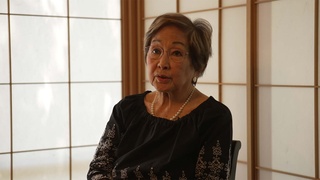Interviews
Mothers and Taiko
Well, it’s interesting because I think with respect to the group, when you look at the old Paia Mantokuji Taiko group, it was all men, older men. And when you look at Maui Taiko now, there’s quite a number of mothers who are in the group, and my husband who’s a father, and my dad. But, the mothers were the ones that brought their children to become involved culturally in taiko. And somehow they became involved in taiko. And what we do—and I know we did this during our last recruiting session with our new members—was that we got the children involved, but we always would say, “The mothers and fathers are welcome to join us, too.” We always say that.
And what we found is that when you do it together, the members stay for a long time. The members who are in our group—the mothers and daughters and the mothers and son and entire families—they have been the ones that have been with the group for more than five or six years. And there are children who come through our group who have only done it themselves without their parents, but we end up losing them to college and even through high school. But, the mothers stay. So we do stress family because I think we recognize that they commit longer to the group.
Date: July 9, 2004
Location: Hawaii, US
Interviewer: Art Hansen, Sojin Kim
Contributed by: Watase Media Arts Center, Japanese American National Museum
Explore More Videos


Facing discrimination in America (Japanese)
(b. 1936) Shin-issei welding business owner


Parents
(b. 1934) Award-winning Disney animation artist who was incarcerated at Topaz during WWII

My daughter couldn’t fit in Japan, so I decided to go back to America (Japanese)
(b. 1936) Shin-issei welding business owner

His sister Kiyo was like a second mother to him
(b. 1942) Japanese Peruvian incarcerated in Crystal City

How he met his wife
Professor of Law, University of Sao Paulo, Lawyer, Translator (b. 1948)

Parent’s Marriage
(b. 1939) a businesswoman whose family volunterily moved to Salt Lake City in Utah during the war.
